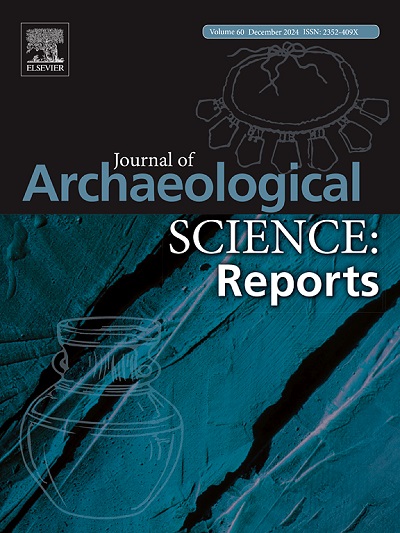解开安第斯中央海岸形成期在年代学上的复杂性:贝叶斯重新评估
IF 1.5
2区 历史学
0 ARCHAEOLOGY
引用次数: 0
摘要
本研究分析了从安第斯中央海岸,特别是秘鲁利马的 13 个形成期遗址中获得的 190 个放射性碳年代,以及从高原遗址 Chavín de Huántar 获得的另外 59 个年代。分析中使用了 OxCal 软件的贝叶斯统计方法。研究结果表明,形成期陶器遗址与先前发现的晚期太古时期遗址(El Paraíso 和 Buena Vista)共存。此外,分析还突出表明,在安第斯形成期,整个中部沿海地区一直存在着一种独特的建筑传统,其特点是采用 U 型建筑。这种建筑风格在公元前 1500 年至公元前 1000 年达到顶峰,随后在公元前 1000 年至公元前 500 年逐渐衰落,同时在公元前 1100 年至公元前 550 年与著名的高原遗址 Chavín de Huántar 在时间上也有明显的重叠。这项研究为今后的研究奠定了基础,有待在后续调查中获得更多的年代数据。本文章由计算机程序翻译,如有差异,请以英文原文为准。
Untangling the chronological complexities of the Andean Central Coast Formative Period: A Bayesian reassessment
This study presents an analysis of 190 radiocarbon dates derived from 13 Formative sites situated in the Andean Central Coast, specifically Lima, Peru, alongside an additional 59 dates obtained from the highland site of Chavín de Huántar. Bayesian statistical methods implemented through OxCal software are used for this analysis. The findings point towards the coexistence of Formative ceramic sites with previously identified Late Archaic sites (El Paraíso and Buena Vista). Additionally, the analysis highlights the persistent presence of a distinct architectural tradition characterized by U-shaped buildings across the central coastal landscape during the Andean Formative period. This architectural style reaches its zenith between 1500 and 1000 cal BC, followed by a gradual decline from 1000 to 500 cal BC, while also demonstrating significant temporal overlap with the prominent highland site of Chavín de Huántar from 1100 to cal 550 BC. This study provides a foundation for future research, pending the acquisition of additional dates in subsequent investigations.
求助全文
通过发布文献求助,成功后即可免费获取论文全文。
去求助
来源期刊

Journal of Archaeological Science-Reports
ARCHAEOLOGY-
CiteScore
3.10
自引率
12.50%
发文量
405
期刊介绍:
Journal of Archaeological Science: Reports is aimed at archaeologists and scientists engaged with the application of scientific techniques and methodologies to all areas of archaeology. The journal focuses on the results of the application of scientific methods to archaeological problems and debates. It will provide a forum for reviews and scientific debate of issues in scientific archaeology and their impact in the wider subject. Journal of Archaeological Science: Reports will publish papers of excellent archaeological science, with regional or wider interest. This will include case studies, reviews and short papers where an established scientific technique sheds light on archaeological questions and debates.
 求助内容:
求助内容: 应助结果提醒方式:
应助结果提醒方式:


